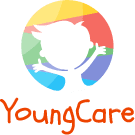White-label childcare solutions are transforming early education by offering affordable, all-in-one tools for billing, attendance, and communication. These systems help small centers scale, improve parent engagement, and support custom curricula. While challenges like limited customization and vendor dependence exist, emerging trends like AI, mobile apps, and integration with other tools promise a more efficient, inclusive, and future-ready childcare experience.
Understanding White-label Childcare Solutions The Origin Story

White-label software is created by one company and rebranded by another to appear as its own product. In the childcare industry, this concept emerged as providers looked for efficient, scalable solutions to manage tasks such as billing and parent communication—without the need for costly custom development. By making comprehensive management systems more accessible, even smaller childcare centers can now operate with the efficiency of larger organizations.
Core Ideas and Key Benefits

White-label childcare software offers all-in-one features specially designed for childcare centers.
- It includes tools for billing, keeping track of attendance, and communicating with parents.
- You can customize the look of the software to match your center’s brand.
- It’s more affordable, as you pay a subscription instead of spending a lot upfront.
- It helps reduce mistakes and saves time on admin work.
- You also get regular updates and support without needing your own tech team.
Real-world Applications and Examples

Here are some examples of how white-label solutions are used:
- Helping Small Centers Grow: Local daycare centers can use white-label software to keep their operations consistent as they expand to more locations.
- Better Parent Communication: Parent portals included in these platforms make it easier to share updates and build trust with families.
- Custom Curriculum Support: Some advanced platforms let centers add their own learning programs, making sure the technology matches their teaching style.
Challenges and Critical Viewpoints

Childcare providers using white-label solutions may face some challenges, such as:
- Limited Customization: It may not be possible to fully change or adjust the software because of how it is built.
- Dependence on the Vendor: There’s a risk if the vendor changes their plans or stops offering the product.
- Data Security: It’s very important to keep data safe and follow privacy rules.
- Learning and Adjustment: Switching to a new system may take time, and staff might need training to get used to it.
Emerging Trends and the Future of White-label Childcare Solutions

Some new trends in childcare software include:
- AI and Automation: Using artificial intelligence to make admin work easier and to offer more personalized learning for children.
- Mobile-first Design: Creating apps that work well on phones so parents and staff can communicate quickly and easily.
- Accessibility and Inclusion: Adding features that support different user needs, making the software easier for everyone to use.
- Connected Tools: Integrating with other tech tools to help everything work smoothly together.
Conclusion
White-label childcare solutions are changing the way early education is managed by making it more efficient, affordable, and improving communication with parents. As these systems grow and improve, childcare providers should think about their specific needs, include staff and families during the change, check how well the system is working, and use the technology to build stronger relationships and offer better care for children.
Ready to simplify and scale your childcare operations? Discover how white-label solutions can streamline your daily tasks, improve parent communication, and boost efficiency. Whether you’re a growing center or just starting out, the right technology can make all the difference.

